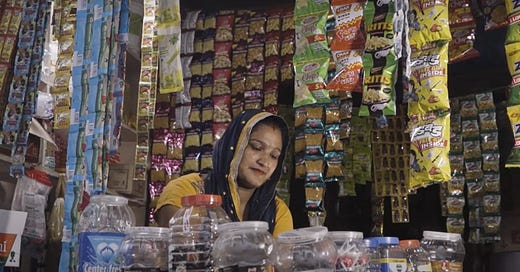🌯 Inclusive FinTech Knowledge Bites [Week #38]
Fintech & microfinance: high-tech meets high-touch strategy, Women-led micro-enterprises segmentation, and Postal Networks as non-exclusive banking agent
This week on The Barefoot Economist:
💡 Fintech in Microfinance: In Search of the High-Tech High-Touch
🧍🏽♀️ The Segmentation of Women-Led Nano and Micro-enterprises
📯 Thailand Post considers 'neutral' virtual banking agent role
Enjoy your weekend reading!
Hugo Pacheco, The Barefoot Economist
💡 Fintech in Microfinance: In Search of the High-Tech High-Touch
Fintech is increasingly attracting impact investors due to its disruptive potential in delivering financial, educational, health, and social services for untapped customer segments, and microfinance institutions (MFIs) are looking to adopt fintech to extend reach, reduce costs, improve client services, and enhance risk management.
🧠 𝗞𝗲𝘆 𝘁𝗮𝗸𝗲𝗮𝘄𝗮𝘆𝘀
Client Preferences: While high-tech solutions help with routine transactions, MFIs must recognise that clients, especially for larger financial decisions (e.g., loans, insurance), still value the high-touch model due to trust and personalised service. Less than 10% of active clients currently use tech-based solutions like mobile banking and ATMs, which means tech adoption may take time.
Balanced Approach: The challenge for MFIs will be to maintain a balance between high-tech efficiency and high-touch trust, perhaps using a hybrid model where digital services support routine tasks but face-to-face interactions remain integral for more complex transactions.
Digital Infrastructure: MFIs serving rural or underserved populations need to consider the digital literacy and infrastructure constraints of their clients. A phased approach where digital capacity is built over time can smooth the transition.
An overview of the opportunity landscape:
Digital lending: MFIs can partner with fintech companies to develop digital lending platforms that use alternative data sources and machine learning algorithms to assess credit risk and make loan decisions. This can help microfinance institutions reach more customers, reduce processing time, and lower operational costs.
Mobile payments: MFIs can partner with fintech companies to offer mobile payment services to their customers. This can help microfinance institutions reduce cash handling costs, increase transaction efficiency, and improve customer convenience.
Digital savings and investment: MFIs can partner with fintech companies to offer digital savings and investment products to their customers. This can help expand their product offerings, attract new customers, and increase customer loyalty.
Data analytics: MFIs can partner with fintech companies to leverage data analytics to gain insights into customer behaviour, preferences, and needs. This can help microfinance institutions tailor their products and services to better meet customer needs and improve customer satisfaction.
Capacity building: MFIs can partner with fintech companies to build their digital capacity expertise, developing the skills and knowledge
🌯 The Barefoot Insight
Investigating further Sub-K’s strategy, bridges the strengths of both self-help groups and microfinance models, underscoring the critical importance of high-touch human connection, backed by the right technological tools. By empowering women and involving families, Sub-K is not just scaling financial services but creating an ecosystem where communities thrive together.
Empowering Women Through Leadership and Agency
The organization focuses on the leadership of women in these SHGs, many of whom are educated and capable of doubling as financial agents. Sub-K maximizes the potential of these networks by recruiting women from the groups to serve as agents, expanding financial access, especially for women customers. This aligns with cultural norms in India, where women feel more comfortable interacting with female agents.Building on the Microfinance Model
Beyond SHGs, Sub-K taps into the broader microfinance landscape, where the majority of customers are also women. These microfinance institutions (MFIs) operate with a similar group-based approach, providing loans and financial products to women who often lack access to formal banking. Sub-K leverages the most active members within these microfinance groups, empowering them to become agents themselves. This not only increases the pool of trusted agents but also accelerates the adoption of financial services by more women in rural areas.Family as a Business Unit: An Inclusive Approach: Sub-K extends its inclusivity by encouraging male agents to enrol their spouses or female relatives as sub-agents, thereby ensuring that women are central to the agent network. This family-as-a-business-unit model enables longer operational hours and creates a support system for agents to work more efficiently. Currently, 30% of Sub-K’s agents are women, either directly or indirectly involved.Results that Speak to Inclusion
While exact data on the gender distribution of customers is not readily available from the banks, Sub-K estimates through sampling that 48% of its customer base are women. This near-equal distribution reflects the positive impact of Sub-K’s gender-inclusive strategies. The Human Element: Trust and Respect
Sub-K’s rural agents make a profound social impact of this model as they take pride in their work, feeling empowered by the trust and respect gained from their community. Women agent empowerment demonstrates how financial inclusion goes beyond transactions—it's about dignity, trust, and building long-term relationships.






